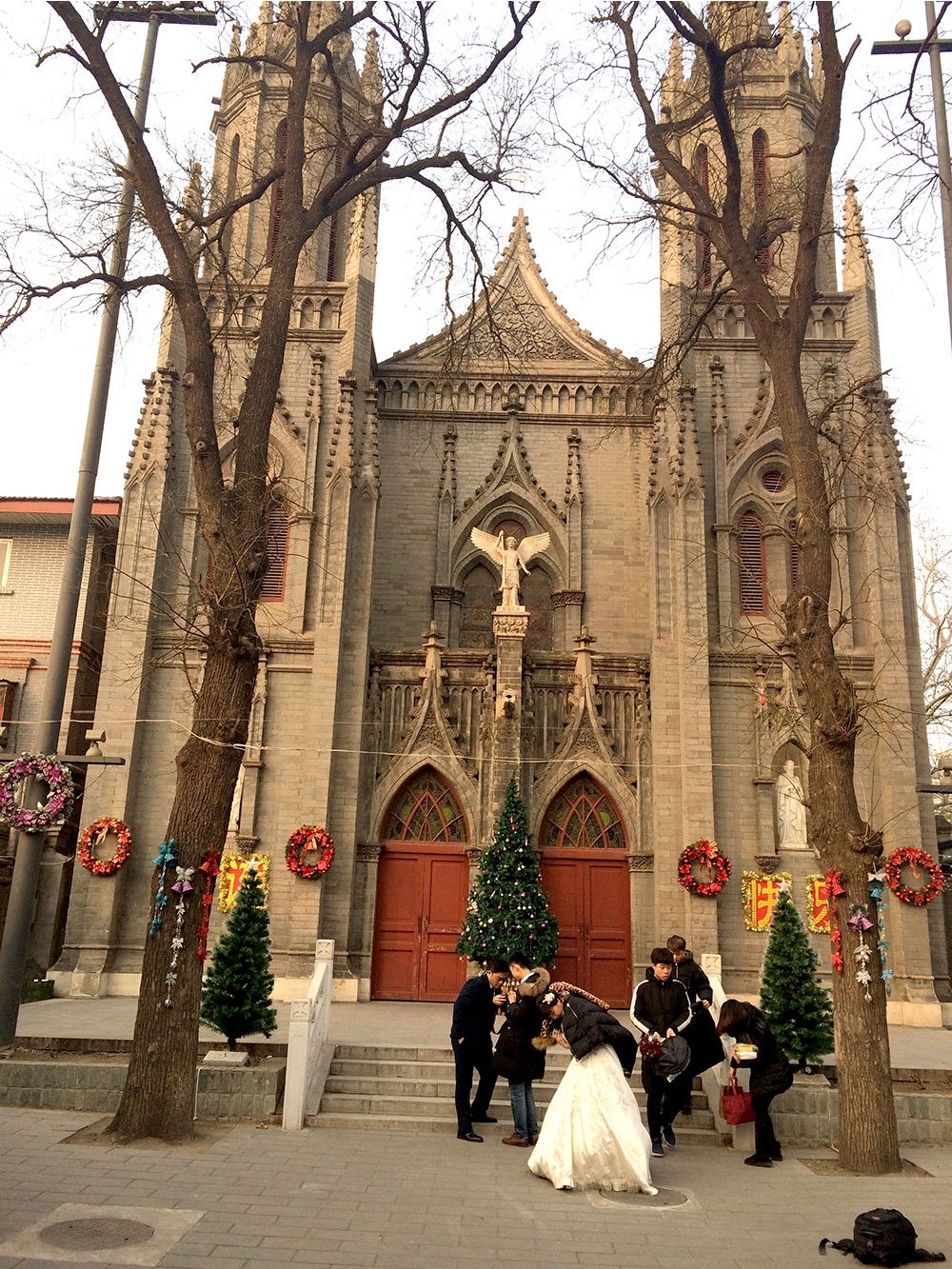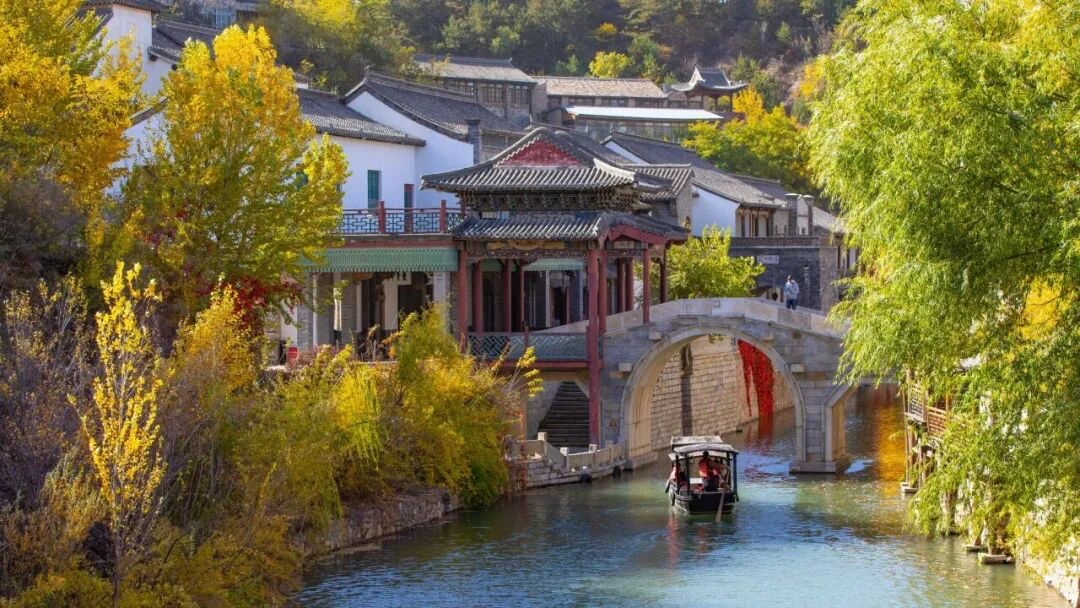Aside from its Buddhist and Daoist temples and mosques, Beijing also has numerous historic churches. Many were demolished and rebuilt several times over the past few centuries as they fell victim to earthquakes, fires and popular revolts. Today, some are caught in-between global and Chinese religious administrations.
Most lack the rich artwork of European churches and instead feature locally inspired details, such as Chinese gazebos and icons of Mary and infant Jesus with Asian features.
Visitors attend religious services, Bible study and choir, but also come to take selfies and pictures with the churches as the backdrop. Here are some of Beijing’s best-known churches.
Cathedral of the Immaculate Conception
The Cathedral of the Immaculate Conception, also known as Xuanwumen Church or South Church (Nantang), is the oldest Catholic church in Beijing. It was built in 1605 during the Ming dynasty. When Italian Jesuit Matteo Ricci arrived in Beijing, the Wanli Emperor allowed him to build a small chapel next to his residence by the Xuanwumen city gate.
The church was expanded and became a cathedral in 1690, when Beijing received its first Catholic bishop. A decade later it was enlarged and renovated into a European-style building.
During the 18th century, the church was destroyed by two earthquakes and a fire, and rebuilt each time with the emperors’ support. It was confiscated by the Qing government in the 19th century and razed to the ground during the Boxer Rebellion in 1900, along with most churches in Beijing.
Its current structure dates from 1904. The church holds masses in English, Latin and Chinese on Sundays, as well as masses in Chinese and Latin during the week.
Gangwashi Church
Gangwashi Church is a Protestant church that was built during the 1860s with sponsorship from the London Missionary Society. Its name can be translated into Crock and Tile Market Church.
Like the Cathedral of Immaculate Conception, Gangwashi Church was also destroyed during the Boxer Rebellion in 1900, which targeted foreigners and Chinese Christians.
The church was rebuilt in 1903, and in 1922 it merged with China Christian Church. The church holds masses in Chinese and English, as well as a Korean mass on Sunday afternoons. On a recent Saturday, Chinese worshippers were singing on stage in the church’s main hall, while in a back room, a small group of foreigners were holding Bible study.
Former US President George W. Bush attended Sunday services at Gangwashi Church with his wife, Laura, during a state visit in November 2005.
Church of the Savior
Another establishment with a rich history is Church of the Savior, also known as Xishiku Church or North Church (Beitang). The Catholic church was originally built in 1703 on land near the Forbidden City bestowed by the Kangxi Emperor to the Jesuits after two priests helped him recover from an illness.
In 1887, the church was moved and rebuilt at its current location at the request of the Guanxu Emperor, who wanted to make space for Zhongnanhai Park. Its Gothic architecture, with pointed steeples and window ornaments, was designed by Lazarist Bishop Pierre-Marie-Alphonse Favier.
During the Boxer Upspring, Favier led the cathedral’s defense against a crowd of about 10,000 people. More than 3,900 people, mostly women and children, found refuge inside the church.
Today, the church blends Western and Eastern influences, with its Gothic south façade flanked by two Chinese pavilions that are housing tablets describing the church’s construction and relocation.
Inside, the tall poles are decorated with vertical red stripes with Chinese calligraphy. The nooks on each side of the altar display Chinese icons of Madonna and the Child. One of the icons features a Chinese Mary and infant Jesus clad in imperial robes of the Qing Dynasty. The icon is said to have originally been painted by an unknown foreigner in Shanghai and destroyed during the Cultural Revolution. Hong Kong artist Zhu Jiaju recreated it.
St. Joseph’s Church
St. Joseph’s Church, also known as Wangfujing Church or East Cathedral (Dongtang), is the second-oldest Catholic church in Beijing. It was built in 1655 by Jesuit missionaries on land donated by the Shunzhi Emperor of the Qing Dynasty.
In the 18th and 19th centuries, the church was destroyed by an earthquake and a fire. Foreign missionaries who came to China during the Second Opium War rebuilt it in 1860, only to have it completely destroyed during the 1900 Boxer Rebellion.
In 1904, the church was rebuilt in its current Romanesque Revival style. It was used as a middle school in the 1950s and closed during the Cultural Revolution. Today, the church is managed by the Chinese Patriotic Catholic Association, a state association that supervises China’s Catholics.
Statues and icons of St. Joseph holding infant Jesus are displayed both inside and outside the church.
St. Michael’s Church
St. Michael’s Church is the old French embassy church, built in 1904 by French missionaries. The embassy has since relocated from the area south of Wangfujing.
The church is one of the smallest Catholic churches in Beijing. It follows a European Gothic style and is memorable for its white statue of an angel above its main entrance, also visible from outside the gate.
The church was remarkably well preserved through the 20th century. During the Cultural Revolution, it was placed under the administration of an elementary school and used as an assembly hall. Its colorful stained glass windows are recent replacements of the originals, which had been brought from France.




